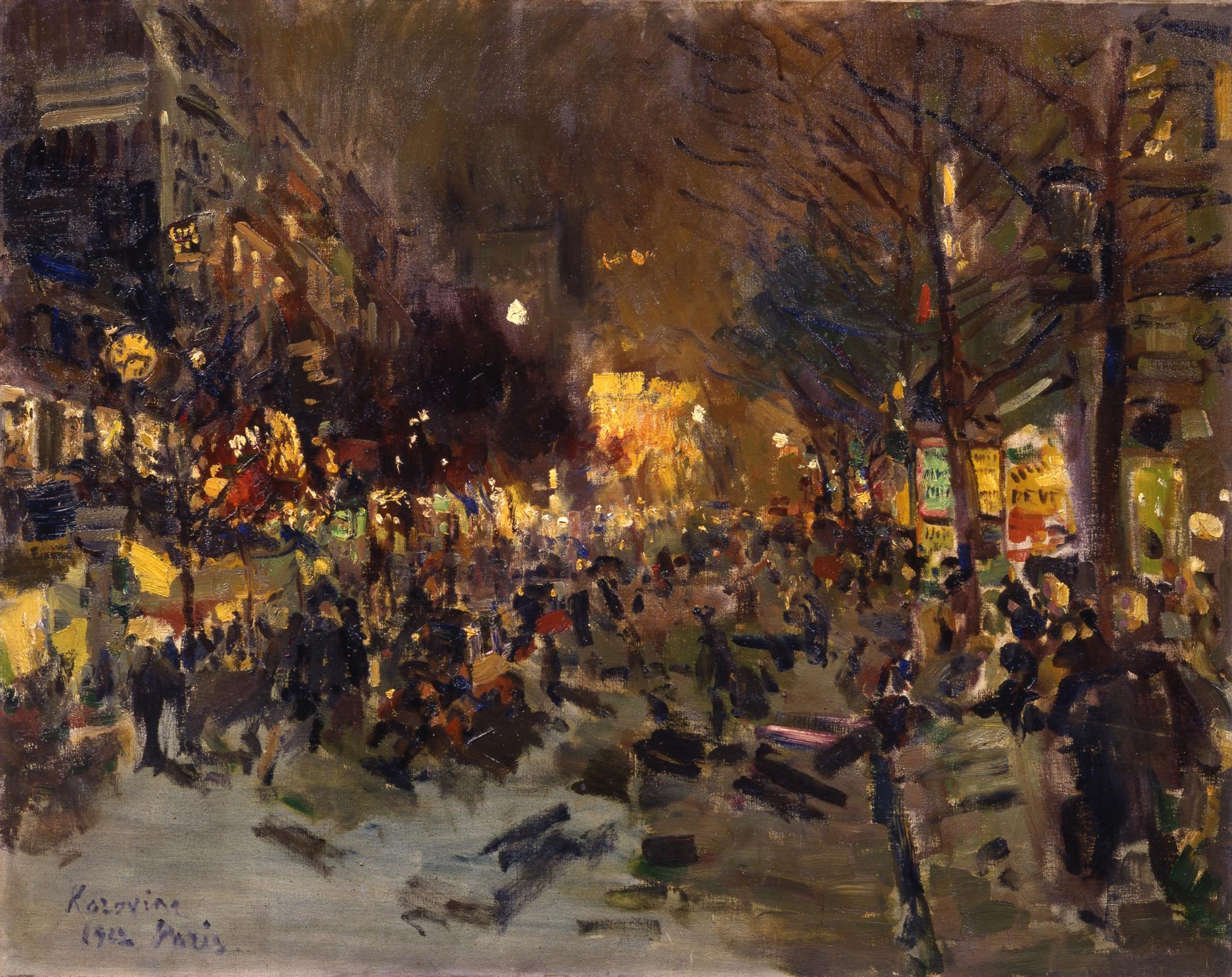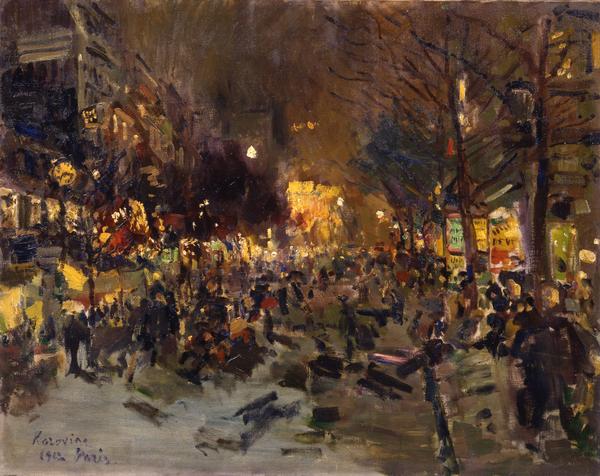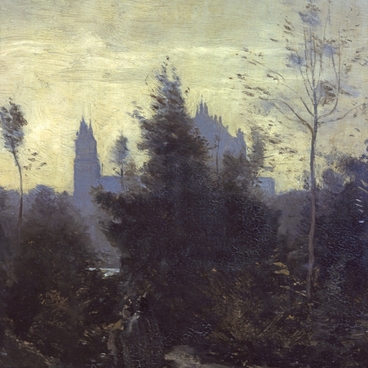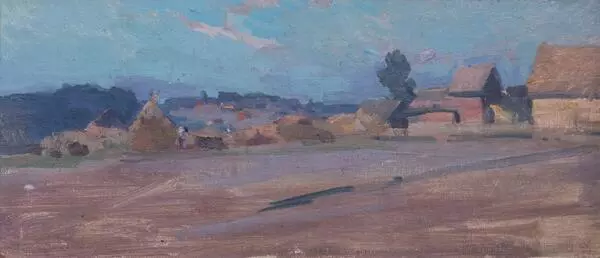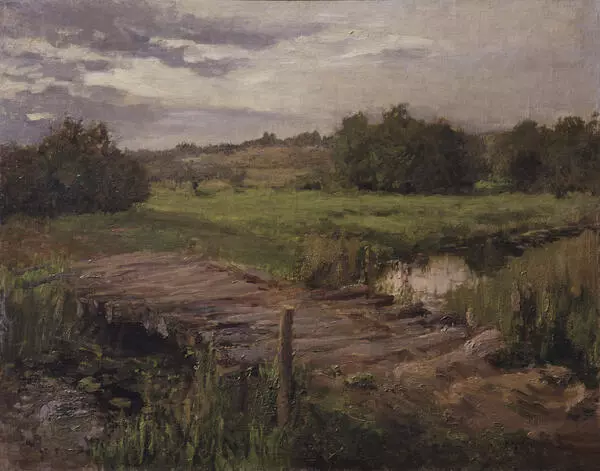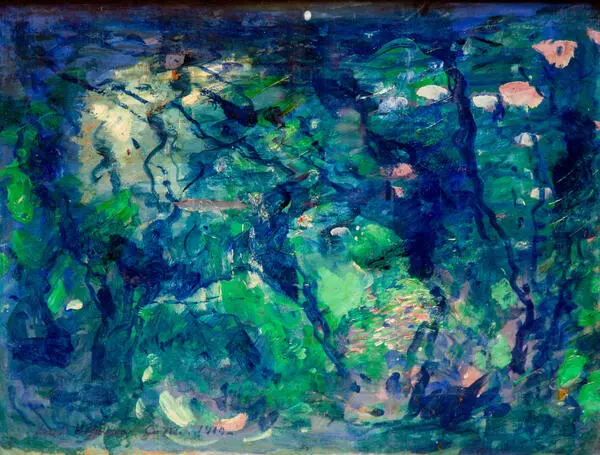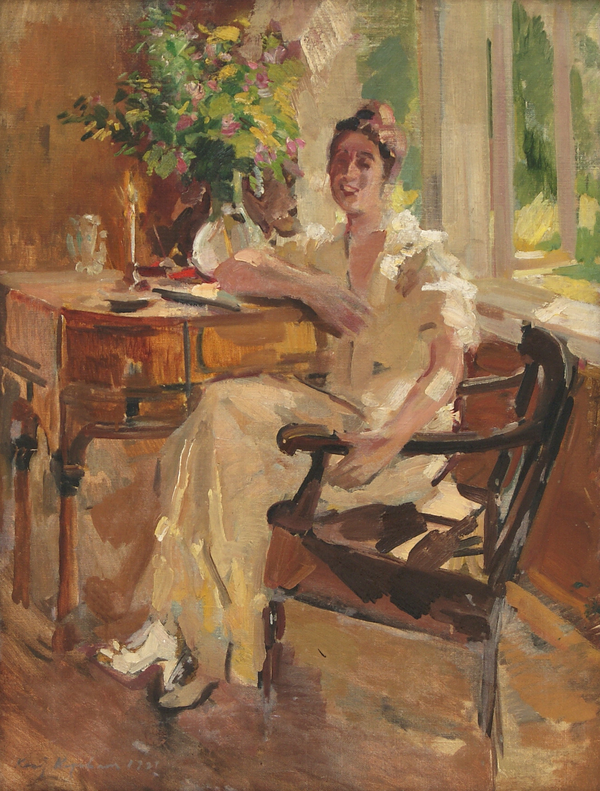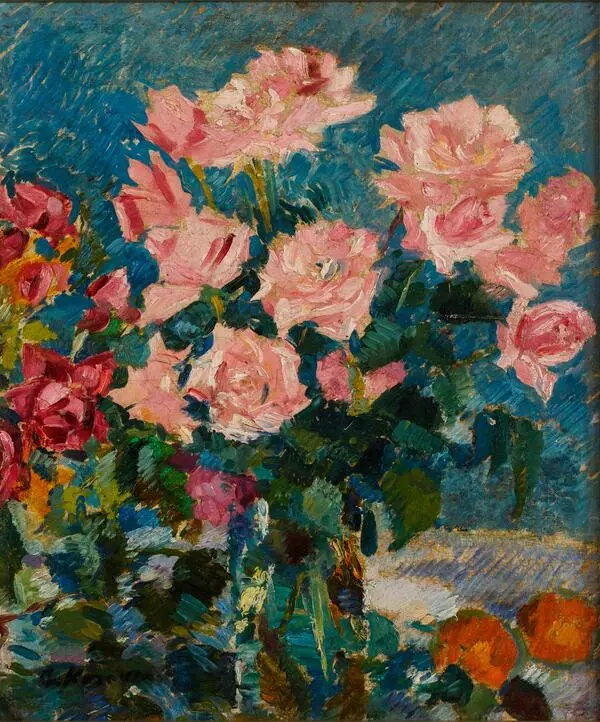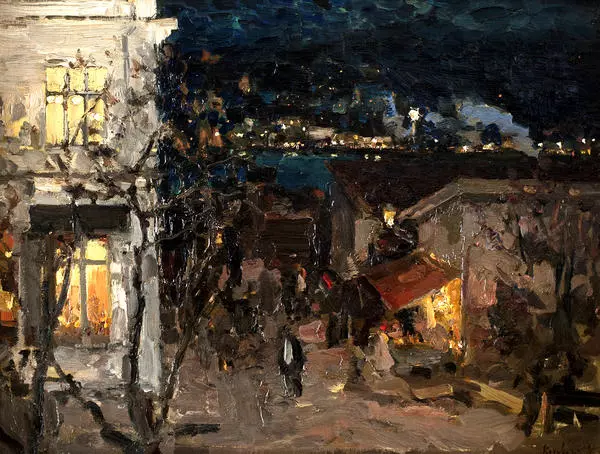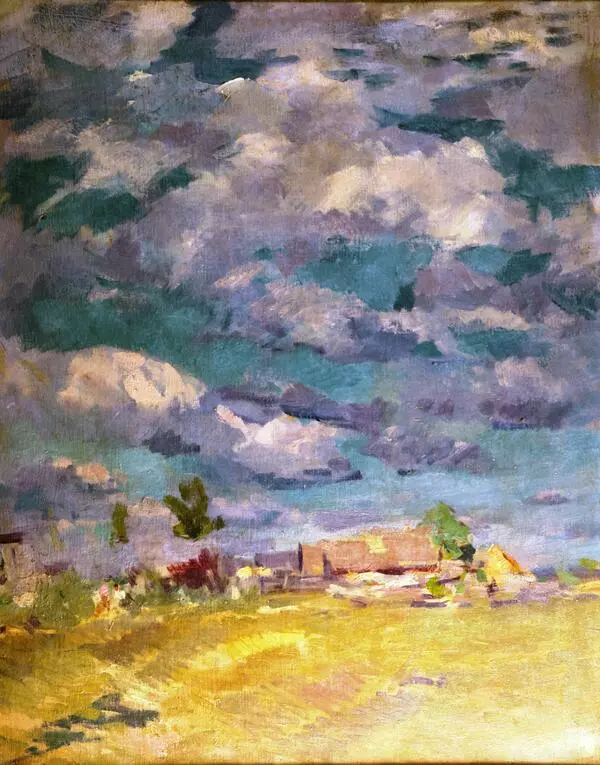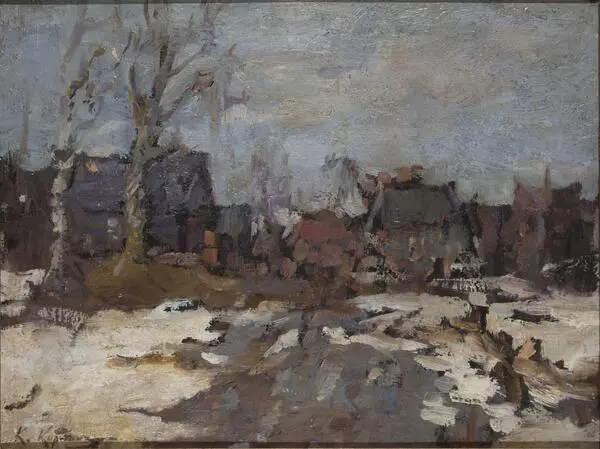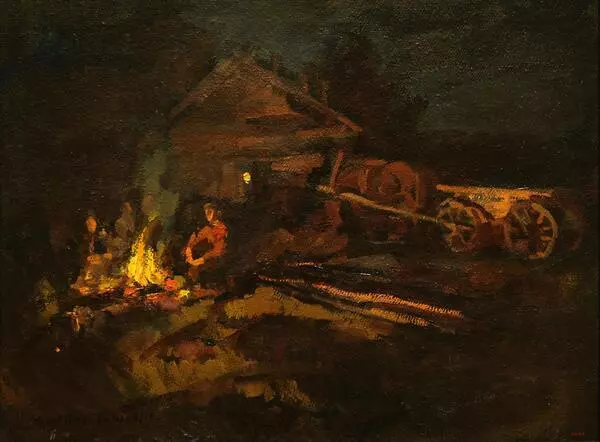Константин Коровин написал ‘Бульвар в Париже’ в 1912 году, во время одной из поездок во Францию. Художник часто путешествовал и несколько раз посещал французскую столицу. По мотивам своих поездок он создал серию пейзажей ‘Парижские огни’.
Boulevard in Paris
Время создания
1912
Размер
73,2x92,2 cm
73,2х92,2 cm
73,2х92,2 cm
Техника
oil on canvas
Коллекция
8
Открыть в приложении#3
Konstantin Korovin
Boulevard in Paris
#2
#4
Konstantin Korovin painted his Boulevard in Paris in 1912 during one of his trips to France. The painter used to travel a lot and visited the French capital for several times. Based on his trips, he created a series of landscapes Parisian Lights.
Korovin often depicted evening cities. In the Boulevard in Paris painting he captured Montmartre in the evening. In the distance, he outlined a crowd of passers-by and silhouettes of trees. Street advertising and shop windows mix up with the light of lanterns in the dusk and create a feeling of bright, festive illumination.
The manner of painting makes Korovin closer to the works of French impressionists. The name of this art movement comes from the French word impression. The general trend of all impressionists is their desire to fixate a certain moment of time, some concrete state of mind. They don’t try to picture life realistically in their paintings, they focus on light, colour and shape.
The night view of the Boulevard in Paris conveyed author’s impressions from the life of a big, dynamic and densely-populated city. In this picture, Korovin mixed different saturated colours: yellow, red, green, orange and even black, which was rarely used in painting at that time. He painted in strokes of different shape, density and width. Such a technique resembled a moving kaleidoscope of colour and light. Irrespective of a free manner of painting, blurred lines and scattered brushstrokes, the perspective of the street and the silhouettes of people remained distinguishable.
Korovin worked in different genres. He produced portraits, landscapes and still-life paintings. Besides, he used to create pieces of scenery for performances in Russian and foreign theaters for more than 30 years. This experience impacted his manner of painting. Critic Alexander Benois wrote, Korovin was a too much theatrical person to neglect such an important element of theatricality as ‘spatial illusiveness’. Artificial lights, flashes of bright colours, flow of moving figures — all those things are referred to ‘theatrical effects’ of his painting.
The Boulevard in Paris landscape was in the collection of entrepreneur David Vysotskiy, later it came to the State Museum Collection, and in 1924 it was handed over to the Radishchev Museum.
Korovin often depicted evening cities. In the Boulevard in Paris painting he captured Montmartre in the evening. In the distance, he outlined a crowd of passers-by and silhouettes of trees. Street advertising and shop windows mix up with the light of lanterns in the dusk and create a feeling of bright, festive illumination.
The manner of painting makes Korovin closer to the works of French impressionists. The name of this art movement comes from the French word impression. The general trend of all impressionists is their desire to fixate a certain moment of time, some concrete state of mind. They don’t try to picture life realistically in their paintings, they focus on light, colour and shape.
The night view of the Boulevard in Paris conveyed author’s impressions from the life of a big, dynamic and densely-populated city. In this picture, Korovin mixed different saturated colours: yellow, red, green, orange and even black, which was rarely used in painting at that time. He painted in strokes of different shape, density and width. Such a technique resembled a moving kaleidoscope of colour and light. Irrespective of a free manner of painting, blurred lines and scattered brushstrokes, the perspective of the street and the silhouettes of people remained distinguishable.
Korovin worked in different genres. He produced portraits, landscapes and still-life paintings. Besides, he used to create pieces of scenery for performances in Russian and foreign theaters for more than 30 years. This experience impacted his manner of painting. Critic Alexander Benois wrote, Korovin was a too much theatrical person to neglect such an important element of theatricality as ‘spatial illusiveness’. Artificial lights, flashes of bright colours, flow of moving figures — all those things are referred to ‘theatrical effects’ of his painting.
The Boulevard in Paris landscape was in the collection of entrepreneur David Vysotskiy, later it came to the State Museum Collection, and in 1924 it was handed over to the Radishchev Museum.
#5
A. N. Radishchev Saratov State Museum of Fine Arts
читать дальшескрыть
00:00
00:00
1x
Boulevard in Paris
Время создания
1912
Размер
73,2x92,2 cm
73,2х92,2 cm
73,2х92,2 cm
Техника
oil on canvas
Коллекция
8
Открыть в приложении
Поделиться
